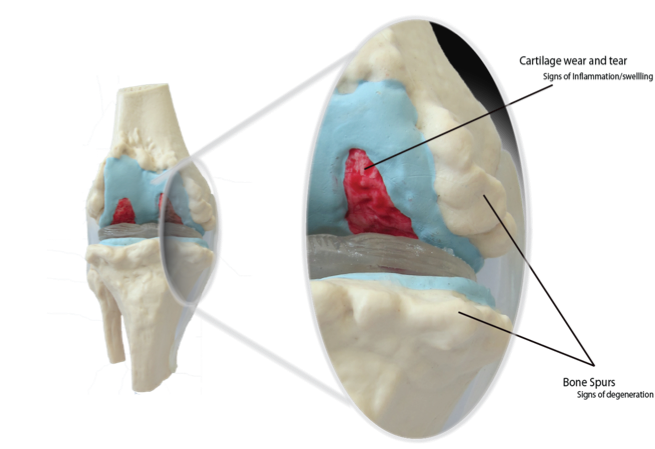
Did you know that osteoarthritis may be the oldest known disease on the planet? Scientists have found evidence of osteoarthritis in dinosaur skeletons dating up to 70 million years old, as well as skeletal remains of the Neanderthal population and Egyptian mummies.
Despite affecting us for thousands of years, doctors have only started to understand more about osteoarthritis since the late 18th century. There are a few reasons why osteoarthritis is now considered the “epidemic of the future”. Millions of people are currently affected by this condition, and its prevalence has increased by 30% in the last 2 decades. This figure continues to rise and the number of new cases of osteoarthritis is expected to double by 2030.
Causes
Let us look at several factors that will explain why osteoarthritis has and will become an increasingly dominant cause of inability to work.
Age
The risk of developing osteoarthritis increases with age. Age is considered the strongest risk factor for osteoarthritis in all joints. On the average, life expectancy has increased worldwide. As an example, a person born in the 1950s is expected to live around 46.6 years, while someone born in 2010 is expected to live two decades more. Therefore, as the population ages, an increasing number of people will fall victim to osteoarthritis.
Obesity
Obesity is another world wide epidemic that is associated with an increased risk of osteoarthritis, especially in the knee and hip. This is due to the high mechanical stress on the joints. Researchers believe obesity is in fact the strongest modifiable risk factor for osteoarthritis. Studies have shown that individuals who lose about 5 kilograms reduce their risk of developing symptoms of knee osteoarthritis by up to a whopping 50%!
Gender
Strangely enough, women are also more susceptible to this condition as compared to men. In many countries, the number of women affected by osteoarthritis is slightly higher than the number of men. In addition, women live an average of two years longer than men, and therefore the age factor further increases the risk osteoarthritis in women. According to some research studies, estrogen has protective effects on the joints, and thus women who have been through menopause are more likely to be affected by this condition.
Others
Certain occupations, sports, genetics and other factors can also raise your risk of developing osteoarthritis. So what can we do to manage this risk?
Treatment
As the old saying goes, prevention is better than cure. If you are over 30 years of age, a simple X-ray will most likely show some degenerative changes in your joints. Although a mild degeneration does not necessarily mean that symptoms will show, we can take a proactive role and limit the damage to our joints before it is too late. If you already have osteoarthritis, do consider trying some supplements that help repair the joints and decrease inflammation.
One of my favorite supplements for both prevention and management of osteoarthritis is turmeric. Turmeric covers many risk factors associated with this condition. Besides promoting healthy joints, it also decreases inflammation and boosts the immune system. This miraculous herb can also improve hormonal balance (especially in women) and help you shed those extra pounds. Best of all, it has anti-aging qualities as well, so we can all enjoy a healthier and longer life.
Contributing Adviser:
Dr Brenda, MD, HD (Nutrition),
Medical author, Assistant Microbiology Professor



